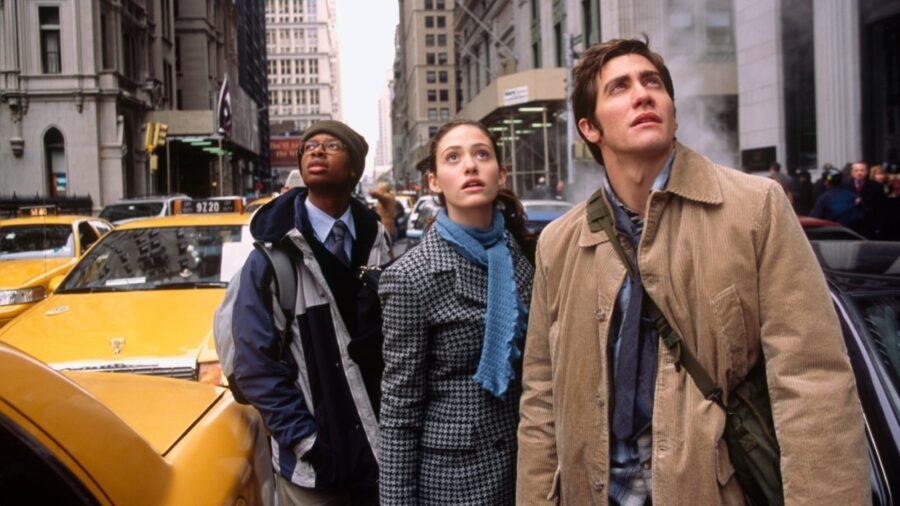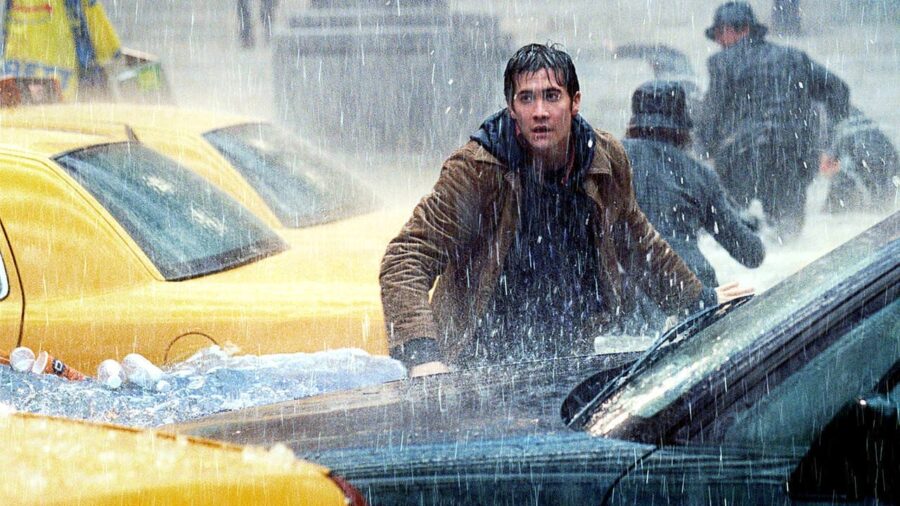See Recent New York City Storm Compared To Jake Gyllenhaal Disaster Movie
New York City storm compared to Jake Gyllenhaal disaster movie.
This article is more than 2 years old

Climate change is a cruel equalizer. In centuries past, only monsoonal countries were known to drown during typhoon season. These days, it’s just as likely to experience cataclysmic rains and surges in otherwise temperate zones as it is in typhoon belts like the Philippines. And so it has. Hurricane Ida ripped through the streets of New York on Wednesday, leaving carnage not unlike those shown in the 2004 disaster film The Day After Tomorrow, starring Dennis Quaid as a National Oceanic and Atmospheric Administration (NOAA) paleoclimatologist and Jake Gyllenhaal as his gifted son Sam.
Concerned Twitter users shared photos and videos comparing fiction with reality, and the results are nothing short of apocalyptic. Art imitating life isn’t nearly as gutting on application, but Jake Gyllenhaal making predictions decades ahead is like extrasensory perception spiraling out of control. Hurricane Ida had whipped New York State and neighboring areas into utter chaos, even subway stations and apartments several stories high are flooded, with torrential waters violently gushing in like the tsunami that devastated New York City in Jake Gyllenhaal’s The Day After Tomorrow. Most of the state has been rendered impassable, with commuters and cars stranded and stuck in waist-high water. Mayors announced a state of emergency that night. Here are a few of the horrifying clips and side-by-side comparisons posted:
While the comparisons to the Jake Gyllenhaal disaster movie are apt, the unfortunate reality for New York City and other areas of the Northeast right now are truly terrible, as seen in these tweets.
Much like his doomsday spectacle 2012, Roland Emmerich’s The Day After Tomorrow presents a version of climate change that could only be described as overkill. When a severe temperature drop in the Atlantic manifests as abnormal weather patterns across the globe, it’s up to climatologist Jack Hall (Dennis Quaid) to gather the Western world’s best minds and reinterpret a prehistoric forecast model for mid-2000s Earth with the goal of saving as many lives as possible. Sam Hall (Jake Gyllenhaal) serves as his unofficial representative in the upper states, most significantly New York.
In The Day After Tomorrow, hailstorms buffet Tokyo, tornadoes devastate Los Angeles, and Nova Scotia suffers a storm surge with the destructive force of a megatsunami threatening Jake Gyllenhaal and his friends. Soon a gigantic storm system composed of three connecting supertyphoons forms over the planet’s oceans. The northern hemisphere is battered with round-the-clock storms, causing massive flooding.
In fact, one of the movie’s most memorable sequences is the long shot of a storm surge crashing into New York. Tsunami-like waves submerge the city several feet below water as Sam (Jake Gyllenhaal) and his friends try to outrun the deluge by ducking into the New York Public Library. The storm quickly turns into a nightmare survival scenario as it pulls frozen air from the upper troposphere into the eye, flash-freezing everything left exposed to the elements. The northern half of the world is struck by a new Ice Age, a phenomenon that was expected to last months, but thankfully only took weeks.

More propitiously, no such Ice Ages is expected to occur over New York, or anywhere else in the world for that matter; director Roland Emmerich exercised great creative liberties in the Jake Gyllenhaal film to deliver a disaster movie with appropriate urgency. His central goal was to increase public awareness on climate change, but since apocalyptic scenarios this extreme are not supposed to happen till thousands of years later, audiences would be better off watching Al Gore’s An Inconvenient Truth than Jake Gyllenhaal’s The Day After Tomorrow. The film is as much an invented situation as the Mayan calendar for the end of the world was all the way back in December 21, 2012. Loosely grounded in projected science, yes — but not entirely realistic given present-day weather conditions.
Still, snippets of The Day After Tomorrow have already transpired in numerous places around the globe because of climate change, whether or not Jake Gyllenhaal has visited. Winters have been especially ruthless over the last decade, with temperatures plunging increasingly and a “snowmaggedon” ravaging Texas and much of the United States only this year. In New York, February recorded the heaviest snowfall in the state’s entire history. Floods and severe hurricanes have been equally relentless, with Hurricane Sandy in 2012 and others in successive years. The planet has suffered more forest fires, earthquakes, tsunamis, and typhoons than any other period in recent memory.
So, while The Day After Tomorrow remains exclusively in the realm of fiction, climate change’s gradual environmental effects do not. The planet exponentially heating up due to carbon emissions, ice caps melting and raising ocean and sea levels, and abnormal weather patterns occurring as a result are not subject to the whims of Jake Gyllenhaal or any other Hollywood filmmaker, and will exacerbate over time without sufficient intervention. Hurricane Ida is a wake-up call, one humanity must take note of if we are to survive future calamities with as little damage and casualty as possible. Or perhaps prevent them altogether. It all starts, and ends, with us.












